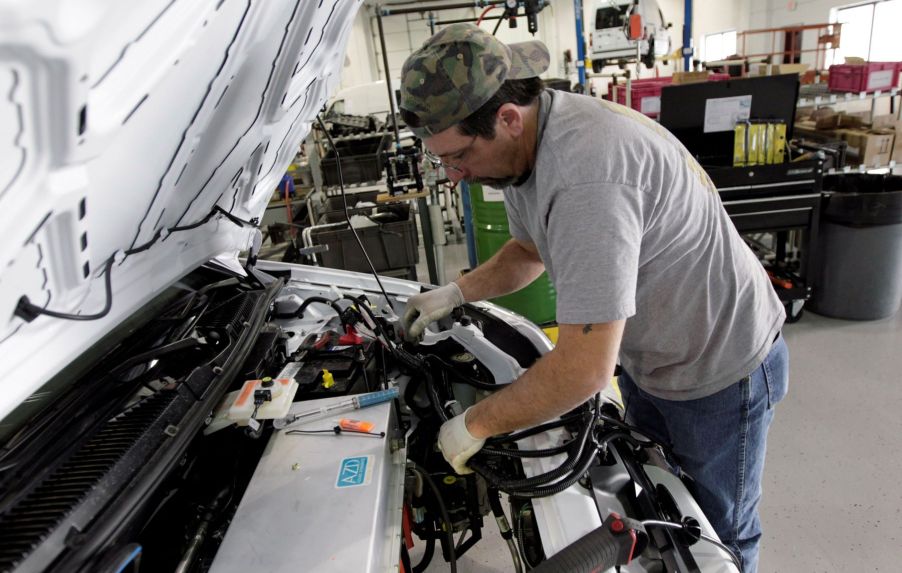
Do Electric Cars Need Oxygen Sensors?
Car maintenance is one of the most important things that car owners need to be aware of, as it can have wide-reaching effects on your car and wallet. Now, with the EV revolution in full swing, many folks are buying or thinking about buying an electric vehicle, and EVs do have some maintenance needs that are unique to them. One maintenance need that gas-powered cars have has to do with their oxygen sensors, so here’s a look at if EV owners need to worry about that.
This is what a car’s oxygen sensor does
Oxygen is everywhere in the air and plays a critical role in combustion engines. This is exactly what an oxygen sensor is for, according to Meineke. Gas-powered cars need to ensure that the gas is burning with a good amount of oxygen in the chamber, and the oxygen sensor’s job is to ensure that’s the case.
If there’s not enough oxygen, that’s referred to as a rich mixture. If there’s too much oxygen, that’s referred to as a lean mixture. Both mixtures are bad in different ways. A rich mixture is bad for the environment, as it can lead to extra pollution from the car. This is also why the oxygen sensor is typically located in the vehicle’s emissions control system.
Meanwhile, a lean mixture is bad because it can damage the engine. This happens because of some complicated chemistry, but it will result in your car having a worse performance and some likely engine damage. As such, drivers of gas-powered vehicles will need to note what their oxygen sensor is saying and repair the sensor if it doesn’t work correctly.
Unsurprisingly, electric vehicles do not need an oxygen sensor

Since an oxygen sensor is essential for regulating the fuel-air mixture in the combustion chamber of a gas-powered car, it’s not surprising that it’s not a necessary feature on EVs. This is because electric vehicles do not have a combustion engine; thus, EVs don’t need gasoline and don’t need to regulate how much oxygen is in the gas mixture.
On top of that, since EVs run on electric motors powered by electricity, they don’t generate any emissions out of the tailpipe. That removes another function of a car’s oxygen sensor. This is because, instead of burning gas, an EV gets its electricity from its battery, and no combustion is needed for that.
What types of maintenance do EVs need?
While oxygen sensors are one aspect of car maintenance that EV owners won’t have to care about, electric vehicles have some unique maintenance needs. Due to the size of an EV’s battery, EVs, on average, tend to be much heavier than gas-powered cars. This can cause additional wear and tear on the tires, which means that folks will need to pay more attention to the maintenance needs of their tires.
On top of that, the big new maintenance concern that EV owners have is the battery. Like a smartphone’s battery, an EV’s battery can lose charge capacity over time. As such, after using an EV for tens of thousands of miles, it may be time to replace the battery, and this won’t be cheap. The good news is that many automakers have put warranties on their EV batteries.
That said, while EVs have some unique maintenance needs, they’re still cars at the end of the day. As such, EVs and gas-powered cars share a lot of maintenance needs. For example, EV owners will still need to change their brake fluids and inspect their brakes.


